Water: Oceans, Coasts, Estuaries & Beaches
Coastal Watershed Factsheets - Coral Reefs and Your Coastal Watershed
| United States Environmental Protection Agency |
Office of Water (4504F) |
EPA 842-F-98-008 July 1998 |

![]() oral reefs are among the world's richest ecosystems, second only to tropical rain forests in plant and animal diversity. However, they are extremely sensitive environments that have special temperature, salinity, light, oxygen, and nutrient requirements. If environmental conditions fall outside the acceptable range of these requirements, the health and dynamics of a coral reef community can be severely disrupted. That's why coral communities are sensitive indicators of water quality and the ecological health of the coastal watershed. They respond to alterations within the entire coastal watershed, such as changes in freshwater flows and nutrient inputs. Consequently, pollution from the destruction and alteration of surrounding coastal watersheds can directly affect the health and productivity of a coral reef.
oral reefs are among the world's richest ecosystems, second only to tropical rain forests in plant and animal diversity. However, they are extremely sensitive environments that have special temperature, salinity, light, oxygen, and nutrient requirements. If environmental conditions fall outside the acceptable range of these requirements, the health and dynamics of a coral reef community can be severely disrupted. That's why coral communities are sensitive indicators of water quality and the ecological health of the coastal watershed. They respond to alterations within the entire coastal watershed, such as changes in freshwater flows and nutrient inputs. Consequently, pollution from the destruction and alteration of surrounding coastal watersheds can directly affect the health and productivity of a coral reef.
What Are Coral Reefs and What Do They Do?
Coral reef ecosystems are unique, biologically diverse systems recognized as valuable economic and environmental resources. Many people think coral reefs are made of plants or rocks, but they are actually made of animals! A coral polyp is a delicate, limestone-secreting animal. The limestone serves as a skeleton that either is embedded within the living tissue of the coral or encloses the animal. A coral reef is made up of colonies of these coral polyps. There are several benefits of coral reefs.
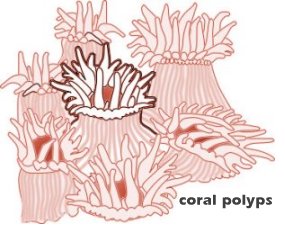
- Coral reefs are an important recreational and aesthetic resource for people visiting or living in coastal areas. People use coral reefs for fishing, underwater photography, scuba diving, and snorkeling.
- Coral reefs provide protection for harbors and beaches, which are often found behind reefs because the reefs provide natural protection from heavy wave action caused by coastal storms.
- Coral reefs are home to a number of species of fish and other marine species, including many that we rely on for food and economic purposes.
- Coral reefs also serve as a laboratory for students and scientists to study and learn about complex ecological and biological processes. In addition, the reefs yield many biological treasures that are increasingly being recognized as natural sources of biomedical chemicals.
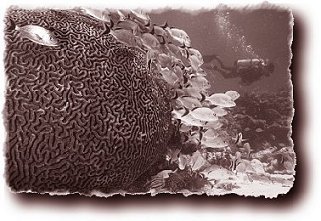
Some Impacts on Coral Reefs
Coral reef habitats are extremely sensitive to disturbances, such as various forms of pollution and physical contact. Pollution of coastal watersheds poses a threat to the existence of coral reefs. Impacts can result from activities occurring near the reef itself or from areas within the coastal watershed that drain to the reef. Disturbances and pollution can lead to diseases in coral such as bleaching (when the algae that give corals their color die). Natural occurrences, such as hurricanes, can adversely impact coral reefs through high-energy storm surges and the resulting resuspension of sediment. However, reefs are usually able to recover from natural disturbances.
People using the reef can have an adverse impact on reef resources. Portions of a coral reef can be broken by the impact of boat anchors and boat groundings. Divers and snorkelers can harm the reef by simply touching it or by removing the corals. Suntan oil from swimmers and snorkelers can harm or even kill sensitive corals. Dragging hooks, fishing line, and nets across the coral reef, as well as placing and recovering lobster traps on reefs, can be damaging. Overfishing also harms coral reefs by removing important species that eat the algae growing on corals. When these fish species are removed, the algae overgrow the corals, smothering them. 
Marine debris, trash floating on the ocean or resting on the ocean floor, comes from many sources, including boaters, divers, improper disposal of trash on land, storm water runoff to rivers and streams, ships and other vessels, and offshore oil platforms. Marine debris can harm fish species and other aquatic organisms that use the reef. Trash that lands on the reef can kill corals by continually rubbing against it or smothering it.
An excessive amount of nutrients from improperly treated sewage, atmospheric deposition, agricultural and urban runoff, and cleaning products high in phosphates can harm coral reef habitats. In excess levels, nutrients overstimulate the growth of aquatic plants and algae. When nutrient levels increase, the delicate balance that exists between corals and algae is destroyed and the algae can overgrow the corals. When this situation is prolonged, the corals are smothered and die beneath the algal carpet. This, in turn, affects the fish and other aquatic organisms using the area, leading to a decrease in animal and plant diversity and affecting use of the water for fishing and swimming.
Some of the leading causes of nearshore coral decline can be related to land development and nearshore construction that are not environmentally sensitive. Sediment, silt, and other suspended solids wash off plowed fields, construction and logging sites, urban areas, strip-mined land, and eroded stream banks when it rains. Increases in coastal sediment are also caused by 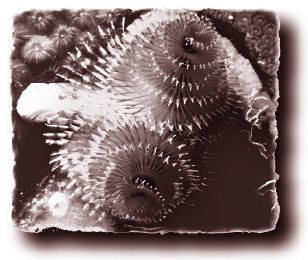 construction of seawalls, docks, and marinas; land-clearing; boats running through shallow waters, disturbing and suspending silts with their propellers; and snorkelers and divers kicking up sediment. Sediment can block sunlight that is essential for the survival of some corals, which live in a very close relationship with microscopic plants (algae) that require sunlight to survive. In addition, heavy sedimentation can bury corals, inhibiting their growth or killing them.
construction of seawalls, docks, and marinas; land-clearing; boats running through shallow waters, disturbing and suspending silts with their propellers; and snorkelers and divers kicking up sediment. Sediment can block sunlight that is essential for the survival of some corals, which live in a very close relationship with microscopic plants (algae) that require sunlight to survive. In addition, heavy sedimentation can bury corals, inhibiting their growth or killing them.
Pathogens are disease-causing microorganisms such as viruses, bacteria, and parasites. Pathogens are harmful to corals, causing disease and scarring in many species. These microorganisms enter water bodies from sources such as: inadequately treated sewage, storm water drains, septic systems, runoff from livestock pens, and boats that discharge sewage.
Coral reefs are vulnerable to the introduction of a wide variety of toxic substances, including metals (such as mercury and lead), toxic organic chemicals (such as PCBs and dioxin), pesticides, and herbicides found in sources like industrial discharges, urban and agricultural runoff, mining activities, and runoff from landfills. Some toxic substances bind to sediment and are transported to coastal waters through sedimentation. These toxic substances can cause scarring, death, or reproductive failure in fish, shellfish, and other marine organisms. In addition, they can accumulate in fish tissue, leading to fish consumption advisories. The sensitivity of corals makes them especially vulnerable to the introduction of toxic substances.

What Is EPA Doing to Protect Coral Reefs?
International Coral Reef Initiative
-- In 1994, EPA, along with the State Department, the National Oceanic and Atmospheric Administration, and the Department of the Interior, formed an international coalition to coordinate information and bring higher visibility to the need for coral reef ecosystem preservation. The coalition became the International Coral Reef Initiative (ICRI), which now includes a membership of more than 90 countries.
EPA's Watershed Approach-- EPA has joined with others to promote the Watershed Approach nationally as a means to further restore and maintain the physical, chemical, and biological quality of our nation's waters, including coral reefs. By addressing issues on a watershed scale, those areas that pose the greatest risk to human and ecological health can be targeted, several pollutants can be addressed at one time, the public can be involved in cleaning up the environment and protecting coral habitats, and integrated solutions for environmental protection can be considered. This is particularly important given the 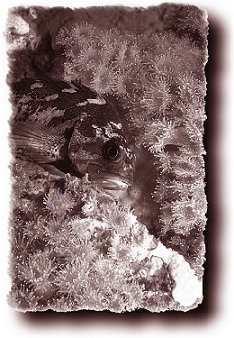 contribution of activities and sources of pollution within the larger watershed to the decline of coral reefs. Through the Watershed Approach, integrated coastal zone management tools and watershed concepts can be applied in the development of comprehensive management and conservation plans. The Watershed Approach aims to determine protective approaches for controlling identified stressors to coral reef ecosystems. EPA's Coastal Watershed Protection Strategy specifically provides technical assistance and support to priority coastal watersheds, such as National Estuary Programs (NEPs) and other coastal waters identified by states.
contribution of activities and sources of pollution within the larger watershed to the decline of coral reefs. Through the Watershed Approach, integrated coastal zone management tools and watershed concepts can be applied in the development of comprehensive management and conservation plans. The Watershed Approach aims to determine protective approaches for controlling identified stressors to coral reef ecosystems. EPA's Coastal Watershed Protection Strategy specifically provides technical assistance and support to priority coastal watersheds, such as National Estuary Programs (NEPs) and other coastal waters identified by states.
Other EPA Programs-- In assisting coastal states with the development of their Coastal Nonpoint Pollution Control Programs, EPA and other federal agencies developed guidance specifying management measures for sources of nonpoint pollution (diffuse runoff of pollutants) in coastal waters. In its program, a state or territory describes how it will implement nonpoint source pollution controls. EPA also works with other federal agencies to protect human health and coral reefs by reducing marine debris. The efforts include the establishment of the National Marine Debris Monitoring Program, which looks at the origins and amounts of marine debris deposited along U.S. coasts. EPA and the Coast Guard work together to regulate the transportation of municipal and commercial waste on vessels and to issue regulations for the manufacture, maintenance, and efficiency of marine sanitation devices (boat toilets), as well as the establishment of “no discharge zones” for vessel sewage. EPA also regulates the discharge of pollutants from facilities into sensitive marine waters. EPA assists states in the development of water quality standards designed to protect human health and aquatic life. This assistance includes the development of criteria for water quality that accurately reflects the most up-to-date scientific knowledge about the effects of pollutants on aquatic life, such as corals, and human health.
What Can You Do to Help Protect Coral Reefs?
You can do several things to help protect coral reefs and your coastal watershed:
- Be informed and involved. Learn about coral reefs and their importance to your coastal watershed. Participate in training or educational programs that focus on reef ecology. Be an informed consumer; ask the store owner or manager from what country the coral was taken and whether that country has a management plan to ensure that the harvest was legal and sustainable over time. Support the creation and maintenance of marine parks and reserves. Become a citizen volunteer. As a volunteer you might be involved in taking water quality measurements, tracking the progress of protection and restoration projects, or reporting special events like fish kills and storm damage. Volunteer for a reef cleanup or a beach cleanup. If you don't live near a coast, get involved in your local watershed program. Report dumping or other illegal activities.
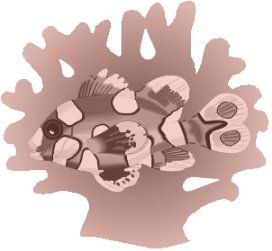
- Take responsibility for your own backyard. Determine whether additional nutrients or pesticides are needed before you apply them, and look for alternatives to fertilizers and pesticides where the chance of runoff into surface waters might occur. Even if you live far from a coral reef ecosystem, these products might ultimately affect the waters that support coral. Consider selecting plants and grasses with low maintenance requirements. Water your lawn conservatively; the less water you use, the less runoff will eventually find its way into the oceans.
- Practice good housekeeping. Learn about procedures for disposing of harmful household wastes so they do not end up in sewage treatment plants that can't treat them or in landfills not designed to receive hazardous materials. Around the house, keep litter, pet waste, leaves, and grass clippings out of street gutters and storm drains to prevent their entrance into streams that might flow to reefs. Use the minimum amount of water needed when you wash your car to prevent waste and runoff. Never dump any household, automotive, or gardening wastes into a storm drain. They might end up on the reef. Take used motor oil, paints, and other hazardous household materials to proper collection sites such as approved service stations or designated landfills. Always follow label directions for the use and disposal of household chemicals. Keep your septic tank in good working order. The improper disposal of wastes and hazardous materials can lead to water quality problems and harm to the sensitive coral reef habitats.
- Respect the reef. Help keep the reef healthy by following local guidelines, recommendations, regulations, and customs. If you dive, don't touch the coral. Keep your fins, gear, and hands away from the coral since this contact can hurt you and will damage the delicate coral animals. Stay off the bottom because stirred-up sediment can settle on corals and smother them. Avoid entering sensitive habitat areas with your boat or other motorized watercraft. Maintain your boat engine to prevent oil and gas leaks. Keep all waste produced during your excursions in a safe place to be disposed of properly when you're back on land. If you go boating near a coral reef, don't anchor your boat on the reef. Use mooring buoy systems if they are available. Maintain and use your marine sanitation devices properly. Conserve energy and keep your auto in good running condition. By conserving energy, harmful air emissions leading to air deposition are minimized.
For additional information...
Call EPA's Oceans and Coastal Protection Division at or write to: |

